A block of mass m=3kg is resting over a rough horizontal surface having coefficient of friction μ=1/3 The block is pulled to the right by appliying a force F inclined at angle 37∘ with the horizontal as shown in fig .The forceincreases with time according to law F=2r newton Calculate its velocity v at t=10s(g=10ms−2)
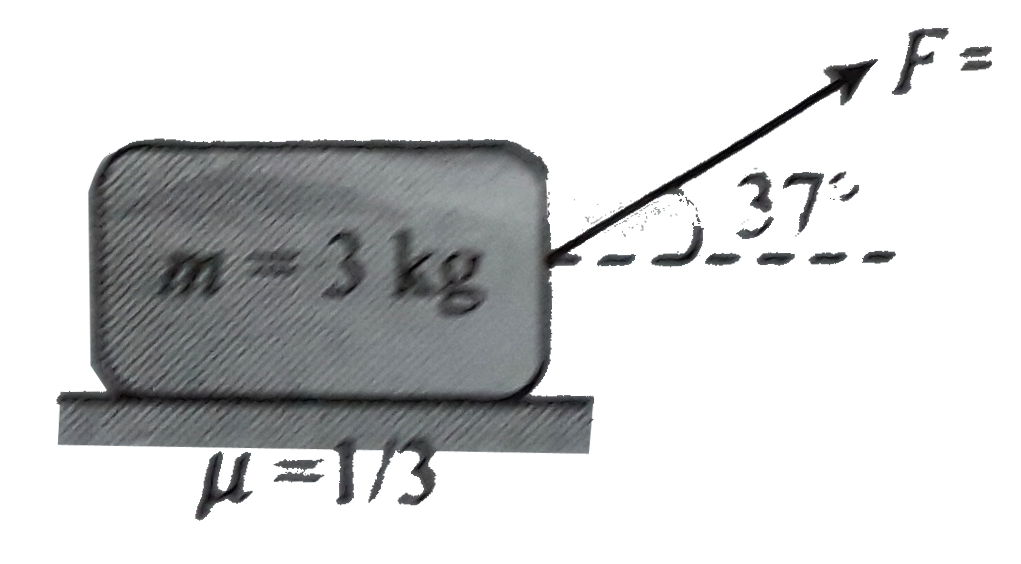
The correct Answer is:253ms−1
At initial moment (r=0) the force of F=2t=0 it mean no force is acting on the block and the force F increases gradually with time Therefore the friction will come into existence and it will come time existence and it will keep the block in static equlibruim till limiting equilibrium is reached let the come to limiting equilibrium at t=t0 then FBD at that moment will be as shown in fig.
N+2l0sin37∘=mg
For horizontal equilibrium.
μN=2t0cos37∘ .
, Solving equation (i) and (ii)
N=24 Newton and t0=5sec
At t=t0 block is in limiting equilibrium hence just after this moment it will start to slip over the surface threefour at t>t0 the FBD of the block will be as shown in figure for vertical equilibrium

N+2tsin37∘=mg
In horizontal direction it will acceleration
2tcos37∘−μN=ma
From Eqs(iii) and (iv) a=13(2t−10)
, But accfeleration a=dv/dt Therefore
dv=a,d=13(2t−10)dt
Integrating above equation with the condition with the conditions that at t=5sv=0 and at t=10st=?
∫10dv=∫10513(2T−10).dt⇒v=253ms−1
Topper's Solved these Questions
- NEWTON'S LAWS OF MOTION 2Book:CENGAGE PHYSICS ENGLISHChapter:NEWTON'S LAWS OF MOTION 2Exercise:Single Correct
Explore 87 Videos
- NEWTON'S LAWS OF MOTION 2Book:CENGAGE PHYSICS ENGLISHChapter:NEWTON'S LAWS OF MOTION 2Exercise:Multiple Correct
Explore 2 Videos
- NEWTON'S LAWS OF MOTION 2Book:CENGAGE PHYSICS ENGLISHChapter:NEWTON'S LAWS OF MOTION 2Exercise:Exercise 7.3
Explore 27 Videos
- NEWTON'S LAWS OF MOTION 1Book:CENGAGE PHYSICS ENGLISHChapter:NEWTON'S LAWS OF MOTION 1Exercise:Integer
Explore 5 Videos
- PROPERTIES OF SOLIDS AND FLUIDSBook:CENGAGE PHYSICS ENGLISHChapter:PROPERTIES OF SOLIDS AND FLUIDSExercise:INTEGER_TYPE
Explore 2 Videos
Similar Questions
Two block of masses M1 and, M2 are connected with a string which passed over a smooth pulley . The mass M1 is placed on a tough inclined plane as shown in figure .The coefficient of friction between and block and the inclined plane is μ what should be the minimum mass M2 so that the block M1 slides upwards?
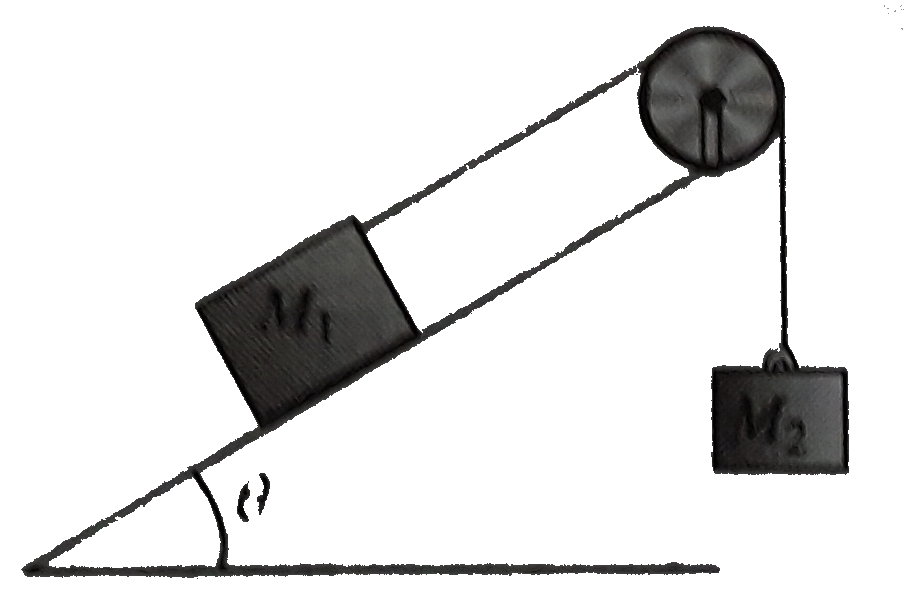
View SolutionBlock B rests on a smooth surface .The coefficient of static friction between A and B is μ=0.4 where F=30N then
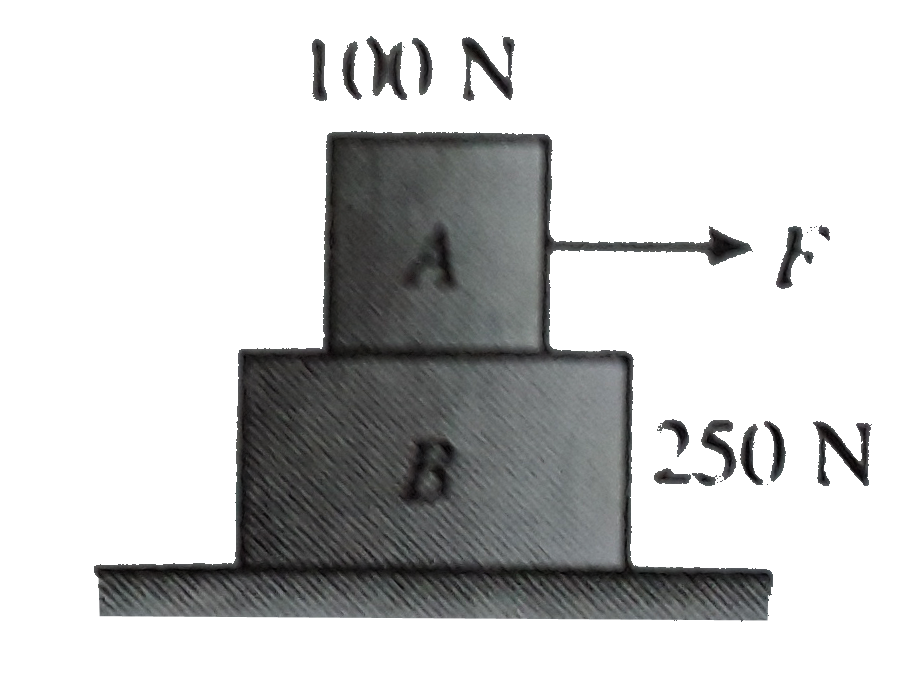
Acceleration of upper block is
View SolutionThree masses are atteched to strings rotaing in the horizontal plank .The string pass over two naine as shown in fig will this system be in equilibrium
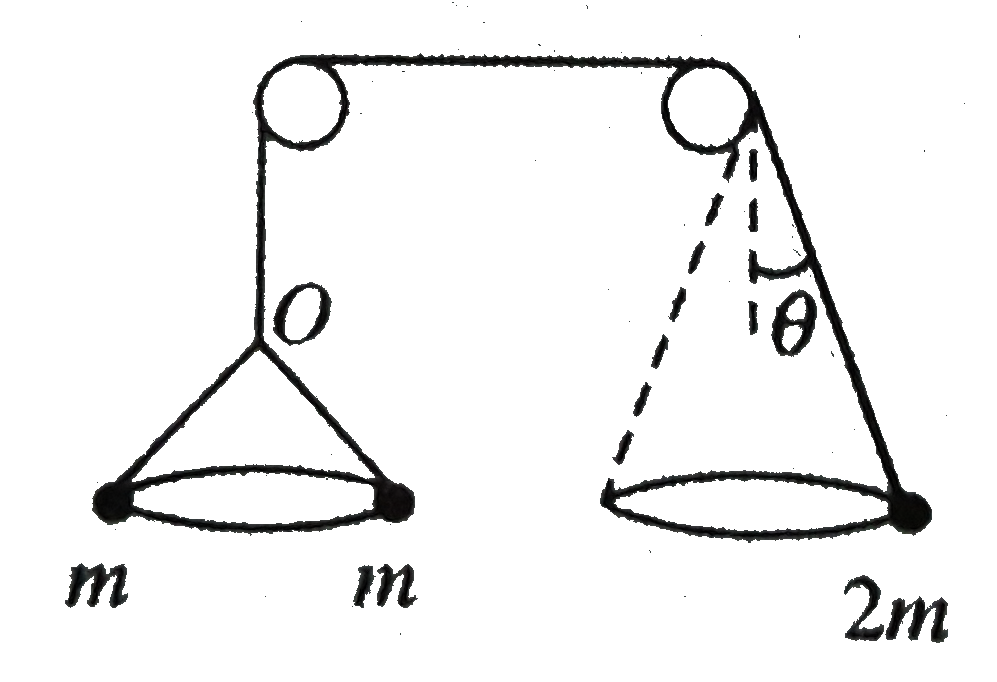
View SolutionA block is placed on an inclined plane moving towards right horizontally with an acceleration a0=g. The length of the plane AC=1m. Friction is absent everywhere. Find the time taken (in seconds) by the block to reach from C to A.
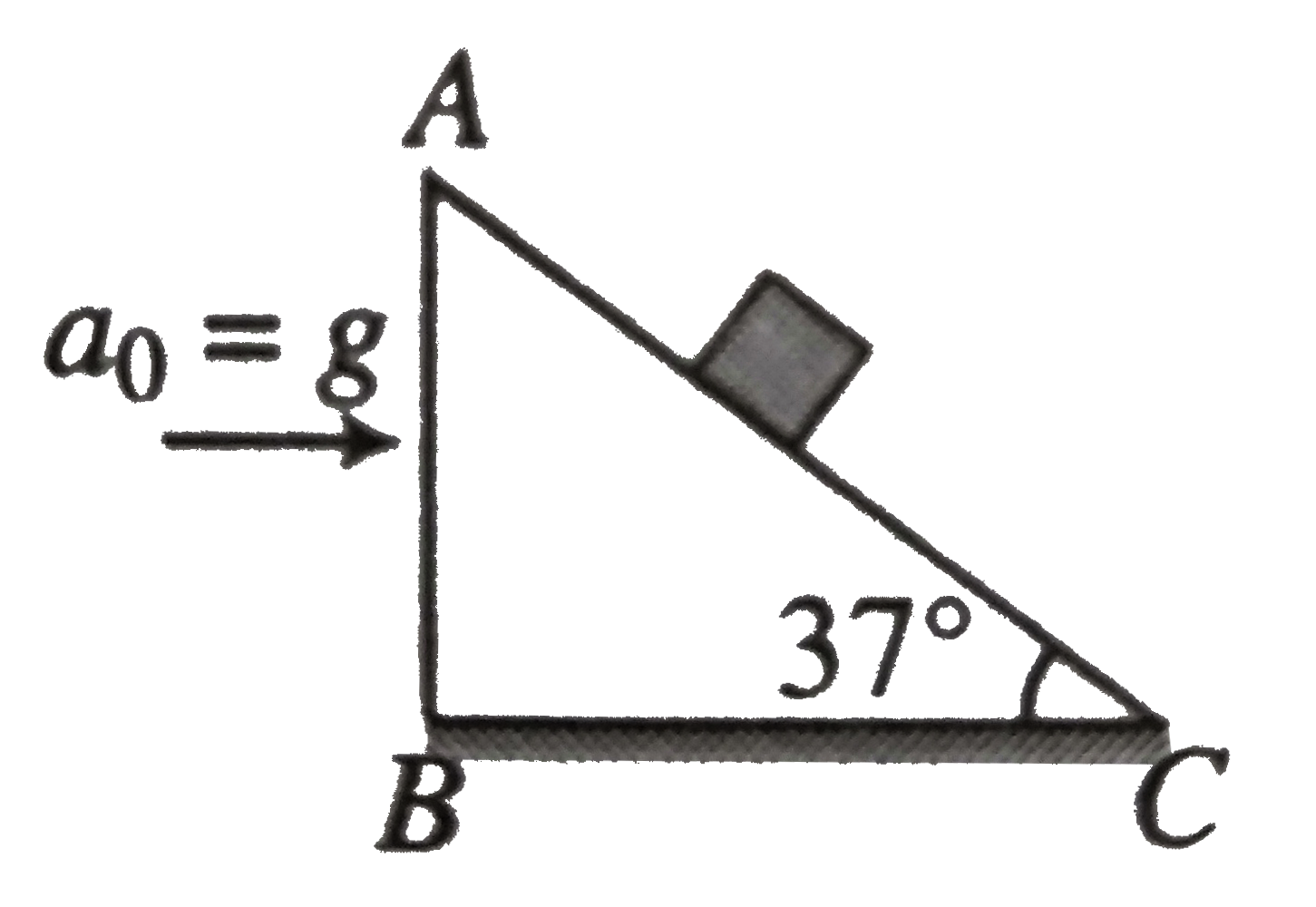
View SolutionTwo soap bubbles A and B are kept in aclosed chamber where the air is maintained at pressure 8Nm2. The radiiof bubbles A and B are 2cm and 4 cm , respectively. Surface tension of the soap-water used to make bubbles is 0.04 N/m. The ratio of nB/nAis ( where nA and nB are the numbe of moles of air in bubbles A and B,respectively.)
[Neglect the effect of gravity]
View SolutionA block of mass m=3kg is resting over a rough horizontal surface having coefficient of friction μ=1/3 The block is pulled to the right by appliying a force F inclined at angle 37∘ with the horizontal as shown in fig .The forceincreases with time according to law F=2r newton Calculate its velocity v at t=10s(g=10ms−2)

View SolutionA block of mass m lying on a rough horizontal surface of friction coefficient μ is pulled by a force F as shown , the limiting friction between the block and surface will be
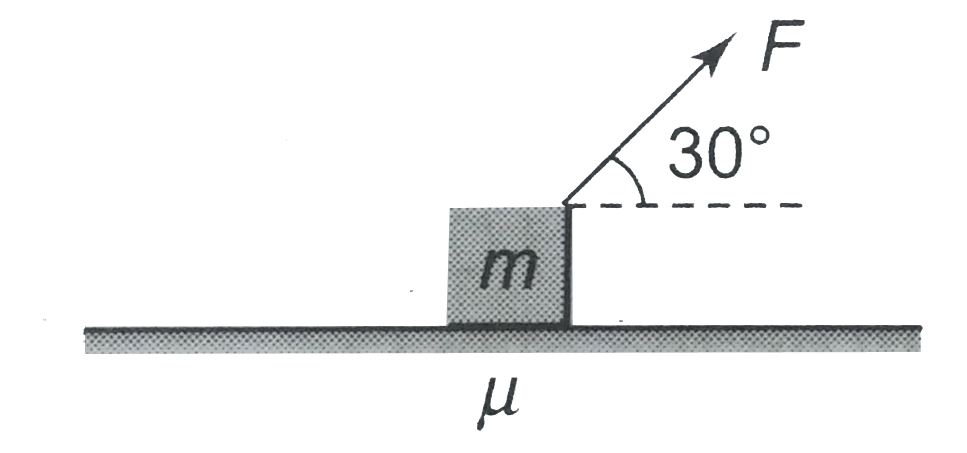
View SolutionA wooden block of mass M resting on a rough horizontal surface is pulled with a force F at an angle with the horizontal. If is the coefficient of kinetic friction between the block and the surface, then acceleration of the block is -
View SolutionA block of mass m=4.4kg lies on a horizontal rough surface. The coefficient of friction between the block and the surface is μ=0.5. A force F starts acting on the block making an angle θ=37∘ to the horizontal. The force changes with time as shown in the graph.
(a) At what time the block begins to move ?
(b) Calculate the maximum speed attained by the block.
[tan37∘=34,g=10ms−2]
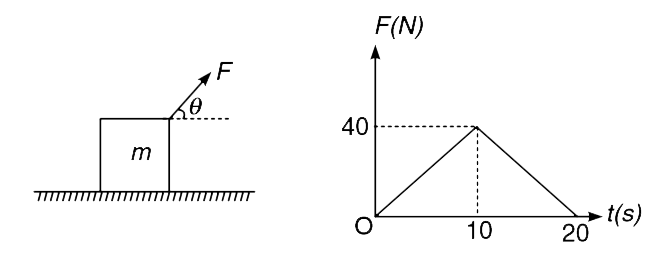
View SolutionA block is kept on a rough horizontal surface as shown. Its mass is 2 kg and coefficient of friction between block and surface (μ)=0.5. A horizontal force F is acting on the block. When

View SolutionA force F is applied on a block of mass √3kg which rests on a horizontal surface with a coefficient of friction 12√3. The maximum value of F for which the block doesn't move, is [Take g=10ms−2]
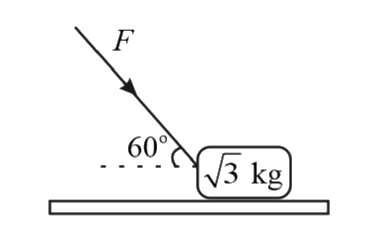
View SolutionA wooden block of mass m resting on a rough horizontal table (coefficient of friction = mu ) is pulled by a force F as shown in figure.The acceleration of the block moving horizontally is :
View SolutionA block rests on a rough inclined plane making an angle of 30∘ with the horizontal . The coefficient of static friction between the block and the plane is 0.8 If the frictional force on the block is 10 N the mass of the block is (g=10ms−2)
View SolutionA wooden block of mass M resting on a rough horizontal surface is pulled with a force T at an angle q to the horizontal. If m is coefficient of kinetic friction between the block and the surface, the acceleration of the block is
View SolutionA block of mass 10 kg is placed on the rough horizontal surface. A pulling force F is acting on the block which makes an angle θ above the horizontal. If coefficient of friction between block and surface is 43 then minimum value of force required to just move the block is (g=10ms2)
View Solution
